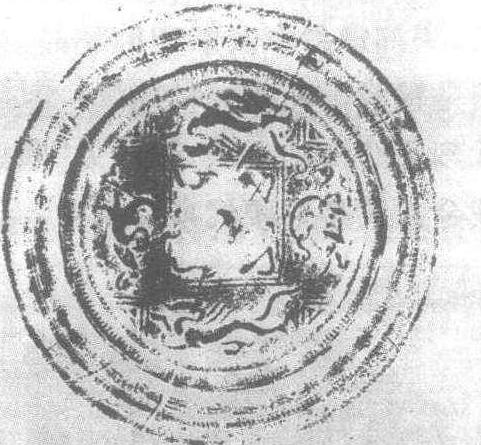四神铜镜
隋末唐初。直径20.2厘米,边厚0.7厘米。钮高1.1厘米,重685克。1984年安徽省望江县出土。安徽省望江县文物管理所藏。铜镜圆形,背面中央有圆形素钮,钮外有单线圆框和双线方框围成的钮座。钮座外有朱雀、玄武、青龙、白虎四神图。外饰有环带铭:“仙山并照,智水齐名,花朝艳采,月夜流明,龙盘五瑞,鸾舞双情,传闻仁寿,始验销兵。”共计32字。铭文外饰一圈锯齿纹,边厚实,略向上卷。

| 词条 | 四神铜镜 |
| 类别 | 中文百科知识 |
| 释义 | 四神铜镜隋末唐初。直径20.2厘米,边厚0.7厘米。钮高1.1厘米,重685克。1984年安徽省望江县出土。安徽省望江县文物管理所藏。铜镜圆形,背面中央有圆形素钮,钮外有单线圆框和双线方框围成的钮座。钮座外有朱雀、玄武、青龙、白虎四神图。外饰有环带铭:“仙山并照,智水齐名,花朝艳采,月夜流明,龙盘五瑞,鸾舞双情,传闻仁寿,始验销兵。”共计32字。铭文外饰一圈锯齿纹,边厚实,略向上卷。
|
| 随便看 |
开放百科全书收录579518条英语、德语、日语等多语种百科知识,基本涵盖了大多数领域的百科知识,是一部内容自由、开放的电子版国际百科全书。